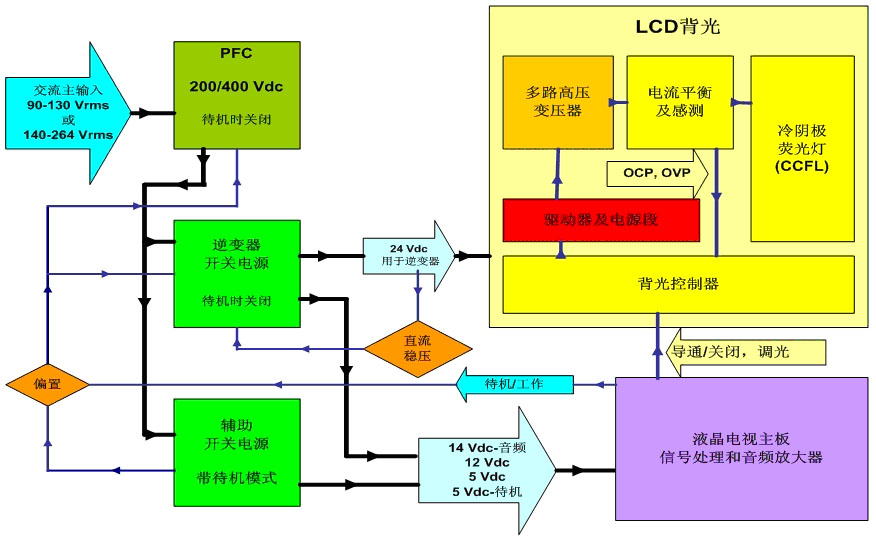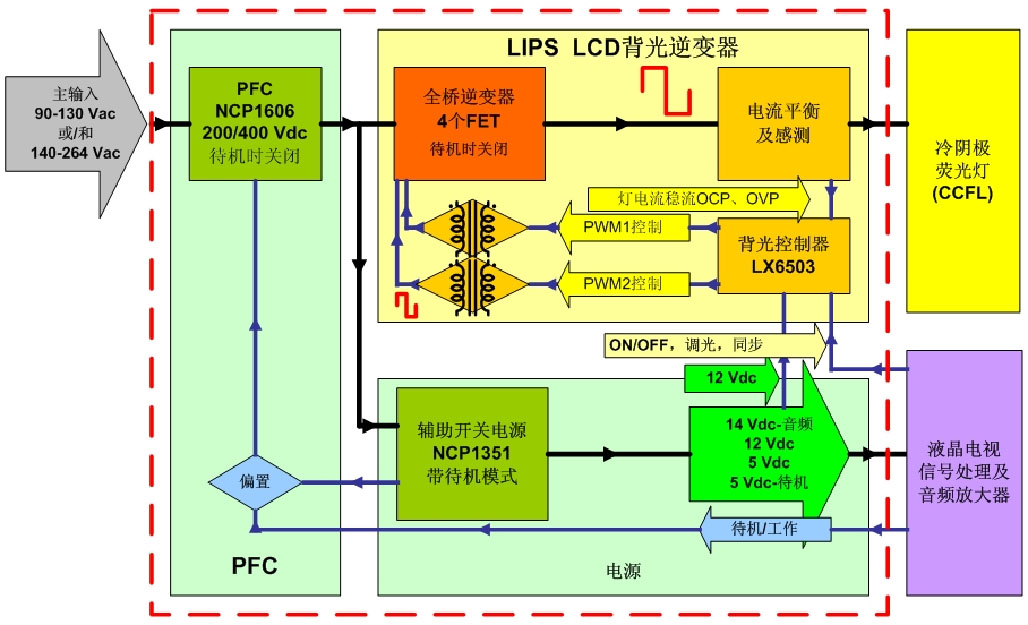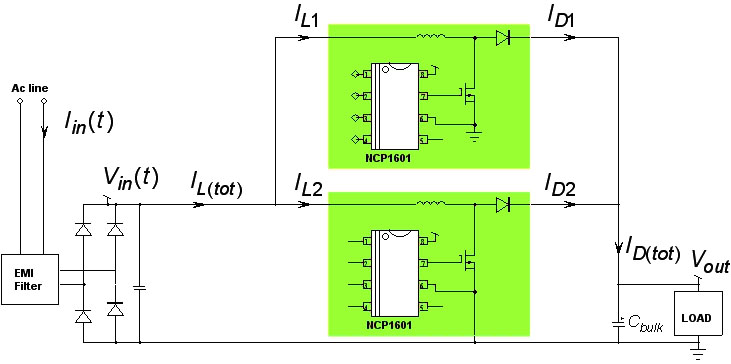Full HD TV energy efficiency specifications Full HD TV has begun to win the favor of consumers. At present, LCD TVs with a size of 24 or more than 26 inches can already support Full HD. From a practical point of view, only Full HD TVs with a size of more than 37 inches can bring consumers a better display effect and viewing experience. Therefore, larger-size LCD TVs will lead the future full-HD market. However, the pursuit of better visual effects has also brought power consumption challenges that far exceed previous ones. Higher power consumption will not only increase consumers' electricity bills, but also does not match the macro-promotion of energy conservation and consumption reduction in various countries. Governments of various countries have issued various green energy efficiency directives, such as the US "Energy Star" version 3.0 TV specifications, power factor correction (PFC) specifications, etc .; consumers are also increasingly concerned about small size, multi-function, energy saving and other issues . Driven by energy efficiency regulations and environmental awareness, power supply design is constantly being updated. This article discusses the related power supply solutions for larger LCD TVs that will occupy the largest market share of full HD TVs in the future. Disadvantages of traditional power supply solutions The traditional LCD TV power supply is mainly composed of AC-DC (AC-DC) conversion, DC-DC (DC-DC) conversion and high-voltage inverter. AC-DC and DC-DC are on the same circuit board, and the inverter is on another circuit board, usually together with the liquid crystal panel. Among them, the AC-DC power supply part rectifies, PFCs and filters the 110Vac / 220Vac voltage of the commercial power, and then converts it into a 200V / 400V DC high voltage. Since the input voltage of the traditional inverter is required to be 24V, the output voltage of the 200V / 400V PFC needs to be stepped down to generate multiple output voltages, of which one 24V voltage is provided to the inverter, that is, through DC-AC (DC-AC) Converted to a high voltage exceeding 1,000V or even up to 2,000V in order to drive the CCFL backlight of the liquid crystal panel. The functional block diagram of this standard 24V inverter LCD TV switching power supply is shown in Figure 1. Figure 1 Block diagram of a traditional LCD TV switching power supply using a standard DC 24V inverter. For LCD TVs with a size of 26 inches and above, a new inverter concept has emerged in recent years-high voltage liquid crystal display integrated power supply (LCD Integrated Power Supply, abbreviated as LIPS). Unlike traditional power supplies that use inverters on separate circuit boards, this LIPS solution integrates AC-DC, DC-DC, and inverters on the same circuit board. After the rectification, PFC and After filtering and obtaining a 200V / 400V DC voltage, 200V / 400V will be directly used as the input voltage of the inverter, which will be converted into a voltage higher than 1,000V or even as high as 2,000 V required by the LCD panel through DC-AC boosting. In this way, the 24 V conversion section is eliminated, and a large amount of power loss in the process of first stepping down to 24 V and then boosting the backlight source with a high voltage of one or two kilovolts is greatly reduced, thereby improving the system energy efficiency, reducing the chassis heat generation, and The total cost. Figure 2 Functional block diagram of ON Semiconductor's full-bridge high-voltage LIPS solution for 32-inch LCD TVs. In this regard, ON Semiconductor and Microsemi fully leveraged their respective expertise to develop a complete set of high-voltage LIPS solutions suitable for multiple power levels. The LIPS solution for the 32-inch LCD TV is shown in Figure 2. In terms of system motherboard power supply, this solution uses ON Semiconductor ’s NCP1606 PFC controller and NCP1351 PWM controller as an auxiliary switching power supply; in the LIPS inverter part, Microsemi ’s LX6503 using soft switching technology is used Bridge driver, which can perform zero voltage switching (ZVS) at a fixed operating frequency. Compared with the half-bridge architecture, this full-bridge inverter solution has significant advantages, such as reducing electromagnetic interference (EMI) and power loss, while improving the driving current waveform of the backlight, without the need for additional power diodes on the bridge. The current specifications of the four MOSFETs and transformers used in this full-bridge structure are half that of the half-bridge structure, so that the power MOSFETs can be driven directly through the isolation transformer, making it easier to implement functions such as primary-side overcurrent protection (OCP). In order to better respond to the market's demand for larger-size LIPS LCD TVs, ON Semiconductor plans to launch the next-generation 46-inch reference design in 2009. The LIPS inverter will use the same full-bridge inverter as the 32-inch solution. And the backlight controller LX6503, but will greatly increase the output power to drive more CCFL lamps. In terms of system motherboard power supply, you can flexibly choose ON Semiconductor solutions based on specific design requirements, such as NCP1601, NCP1606 or NCP1631 and other PFC controllers, and NCP1351 or NCP1379 and other PWM controllers. This new solution uses a dedicated standby switching power supply with relays to support ultra-low standby energy consumption as low as 150mW, and the component height on the circuit board is less than 16mm (the total system degree is less than 20mm), supporting thinner LCD TVs design. In addition, according to the different requirements of power supplies in different regional markets such as North America, China and the European Union, ON Semiconductor can also provide power solutions that meet the corresponding specifications to optimize the design, reduce the system size and reduce costs. Advanced PFC architecture for ultra-thin full HD TV design Nowadays, the thickness of LCD TVs has become thinner and thinner. The latest trend is that the thickness of electronic modules is close to 10mm or less. Such a thin thickness brings more severe challenges to power supply design, usually requires the use of low-height transformers (this is particularly critical for high-voltage LIPS that considers isolation and leakage) or multiple components (PFC coils) are connected in series. And use low-height heat sinks to install the components horizontally, and limit the height of all vertically inserted capacitors to less than 10mm. In terms of PFC, using ON Semiconductor ’s NCP1606 and NCP1654 and other PFC controllers can already reduce the thickness of the LCD TV to a lower level; in order to support extremely slim designs as low as 10mm, two relatively small NCP1601 chips can be used , To achieve with an interleaved architecture, as shown in Figure 3. The interleaved PFC is to place two smaller PFCs of half power in parallel where the original larger PFC was originally placed. These two smaller PFCs work alternately with a 180 ° phase shift, and when accumulated at the input or output, they can cancel out the main part of the current ripple in each phase. ON Semiconductor also plans to launch the new interleaved PFC controller NCP1631 in 2009 to provide customers with more feasible options. This single-chip solution can replace two NCP1601s, and is also suitable for the design of a very thin LCD TV with a thickness of 10 mm with the same extremely low design height. The solution also extends the power range to effectively reduce current ripple. Is the next wave of driving force the standby input energy consumption less than 100 mW? In the future, the standby energy consumption of LCD TVs will further decrease. For example, under the condition of adding a small dedicated microprocessor, the power consumption is less than 600mW when the output power is 50W; and the power consumption of the generation machine will be less than 400mW when the dedicated standby switching power supply is used; if a dedicated standby switching power supply is used and a relay is added (Thus disconnecting all PFC and switching power supplies during standby), the energy consumption can be less than 200mW. If manufacturers want to use more "green" technology to differentiate products, they need to further improve the design, so that standby power consumption is less than 100mW may become the next wave of trends. Summary Using liquid crystal display integrated power supply (LIPS) to replace the traditional 24V inverter power supply, and using a novel interleaved architecture to reduce the thickness of the PFC module, you can achieve a very thin full HD TV design. This type of solution can meet today's consumer demand for full HD TVs with 1,080 line progressive scan (1,080p) vertical resolution. In order to meet the requirements of different application markets in the world, ON Semiconductor, the world's leading supplier of energy-efficient power management solutions, provides high-performance power solutions and reference designs to help electronic product manufacturers shorten the development cycle of full-HD TV products and speed new products Bring to market. The pin refers to the connection between the internal circuit of the integrated circuit (chip) and the peripheral circuit, and the pin constitutes the interface of the chip. According to the function, the pins of AT89S52 can be divided into four categories: main power supply, external crystal oscillator or oscillator, multi-function I/O port, and control, strobe and reset. Terminal Pins,Terminal Hardware Pin,High Precision Terminal Pins,Terminal Pins For Pcb Sichuan Xinlian electronic science and technology Company , https://www.sztmlchs.com
LIPS solution to replace the traditional power supply solution At present, the above-mentioned traditional power supply still accounts for the majority of LCD TV power supplies on the market. In order to comply with various energy efficiency specifications, reduce the power consumption of larger-size LCD TVs, reduce system costs and reduce the size of solutions, making them more popular with consumers, LCD TV power supplies can be designed in various ways. 

Fig. 3 uses two NCP1601 PFC controllers to realize the functional block diagram of the interleaved PFC architecture.
Another focus is the standby energy consumption of LCD TVs. The standard of standby energy consumption stipulated in the "Energy Star" version 3.0 TV specification that came into effect in November 2008 is less than 1W. Although it is not a mandatory requirement, this standard has a high market guiding significance.